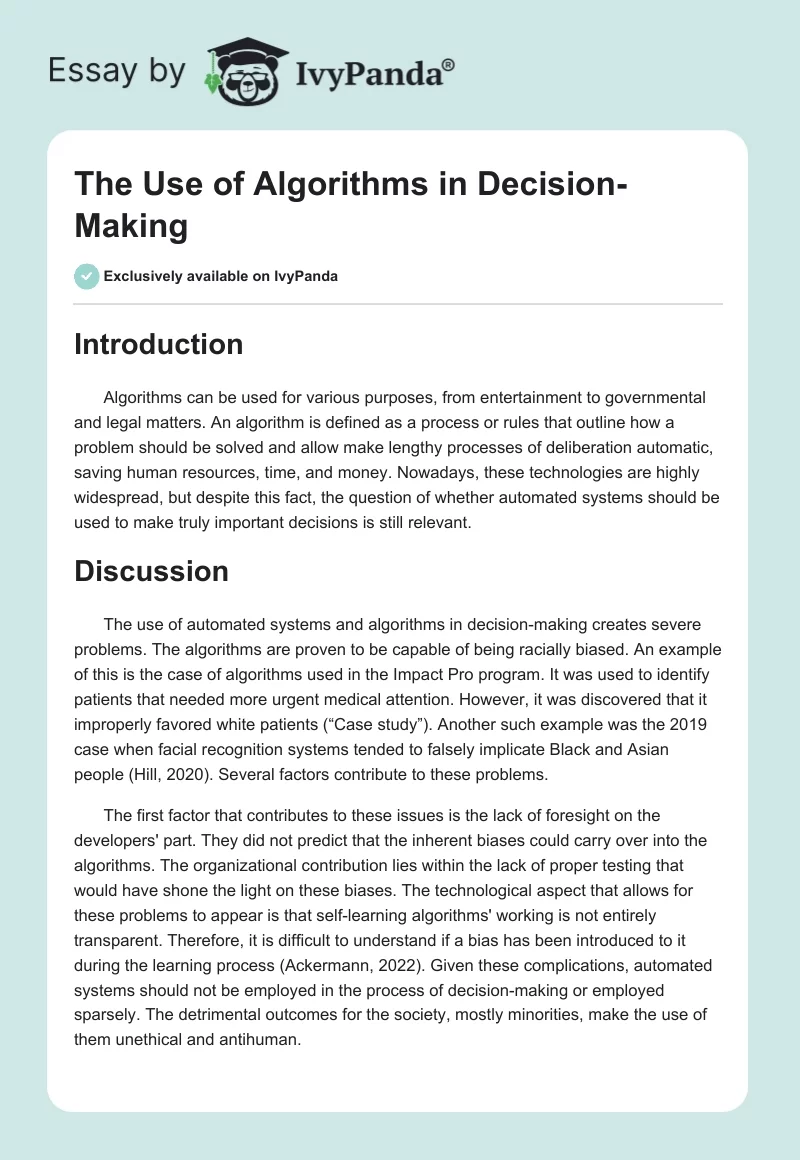Introduction
Algorithms can be used for various purposes, from entertainment to governmental and legal matters. An algorithm is defined as a process or rules that outline how a problem should be solved and allow make lengthy processes of deliberation automatic, saving human resources, time, and money. Nowadays, these technologies are highly widespread, but despite this fact, the question of whether automated systems should be used to make truly important decisions is still relevant.
Discussion
The use of automated systems and algorithms in decision-making creates severe problems. The algorithms are proven to be capable of being racially biased. An example of this is the case of algorithms used in the Impact Pro program. It was used to identify patients that needed more urgent medical attention. However, it was discovered that it improperly favored white patients (“Case study”). Another such example was the 2019 case when facial recognition systems tended to falsely implicate Black and Asian people (Hill, 2020). Several factors contribute to these problems.
The first factor that contributes to these issues is the lack of foresight on the developers’ part. They did not predict that the inherent biases could carry over into the algorithms. The organizational contribution lies within the lack of proper testing that would have shone the light on these biases. The technological aspect that allows for these problems to appear is that self-learning algorithms’ working is not entirely transparent. Therefore, it is difficult to understand if a bias has been introduced to it during the learning process (Ackermann, 2022). Given these complications, automated systems should not be employed in the process of decision-making or employed sparsely. The detrimental outcomes for the society, mostly minorities, make the use of them unethical and antihuman.
Conclusion
In conclusion, automated systems and algorithms serve to solve a plethora of problems. They allow to cut costs and time; however, they can contribute to injustices in society and propel various biases. The contributors to these biases are pronounced on technological, organizational, and management levels. Considering the negative consequences that these systems create, it is unethical to implement them, at least fully, in the process of decision-making.
References
Ackermann, A. (2022). Are decision-making algorithms always right, fair and reliable or not?Liberties. Web.
Hill, K. (2020). Wrongfully accused by an algorithm. Auerbach Publications.
Should an algorithm make our decisions. Case study.


